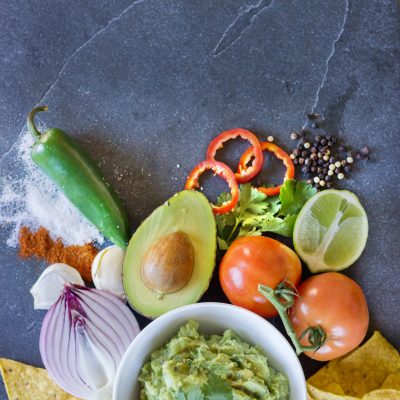Produce at its Peak: Hot Peppers
Throughout the year we are able to offer a selection of hot peppers including Jalapenos, Poblanos, Serranoes, Anaheims, and Habaneros. Yet, the world of hot peppers is so much broader and diverse than these five standards. We frequently receive requests for chilies we cannot source until the summer months when our local growers bring in greater variety.
Hot pepper season has really just begun but we already have Green Cayenne peppers, Jalapenos, and Serranoes from Wisconsin Growers Cooperative (Mondavi, Wis.) and Hot Portugal and Numex Suave (a milder Habanero) from Pork and Plants (Altura, Minn.). More will come including the infamous Ghost pepper that we carefully place with gloved hands into plastic bags to protect both staff and customers from the burn.
This season we began working with Sin Fronteras Farm (Stillwater, Minn). Farmers Eduardo Rivera and Madeline Shaw are growing fresh, healthy Latino food including varieties of hot peppers that can be challenging to find fresh, tomatillos, and epazote along with familiar roots, greens, and herbs. Tomatillo and epazote have been available for a few weeks now and Sin Fronteras pepper crop is just starting to produce. Look for Green Habanero (Hot Lanterns) and Hatch chilies on the shelf this week and Padron and Shishito into August.
Tomatillos form the base and hot peppers the spice of an outrageously simple, smoky, and piquant salsa verde. Risk heating up the kitchen for a few minutes (or heat on a cast iron pan over a charcoal grill) to make this condiment that will liven up chips, beans and rice, or even a salad or sandwich.
Place 6-8 tomatillos, 1 hot pepper of choice (for a milder salsa, start with a Jalapeno, for a more assertive spice try a Habanero), 3 cloves of garlic, and 1 medium green-top red onion cut into wedges in in a dry pan over medium-high heat. Turn periodically until all sides are slightly charred and the garlic and tomatillo are soft – remove from the pan and let cool. In the same pan, heat the oregano until it is fragrant. Once cooled, remove skins from the tomatillo and garlic and the stem from the pepper. Combine all ingredients in a food processor along with the juice of one lime, a handful of chopped cilantro, and salt to taste. Pulse until all ingredients are combined but not until smooth. Taste and adjust seasoning.
New potatoes are available now in steady supply – larger red and gold roots are offered in bulk and smaller sizes of both gold and red are available in pints.
Best to keep it simple here. Bring a pot of salted water to boil and add the potatoes skin-on and whole (for the small – halve or quarter larger potatoes). Cook until tender, drain and return to the pan. Season generously with butter, chopped fresh dill, salt and pepper.
One could also par-boil the potatoes, lay them out to cool and dry on a pan for a few minutes before smashing them gently and frying them up in duck fat or butter with rosemary, thyme, salt, and pepper. Either approach is equally easy and delicious.
Watermelons – 91% water – were born of the semi-arid Kalahari Desert which is said to derive its name from the Tswana word Kgala meaning “the great thirst.” Oddly, these fruits naturally grow best and heavy with water when there is little to no moisture outside – and they ripen quickly to refresh us when we need it most.
As we enter the hot, dry stretch of the summer, watermelons are hydrating and delicious on their own. But it doesn’t hurt to add a few cooling herbs and a splash of lime honey dressing for a little variety and flavor.
Using a melon baller scoop the flesh of the watermelon into a large bowl. Chiffonade leaves from a small bunch of mint and a few sprigs of basil to add to the watermelon. In a separate small bowl, combine lime juice and zest with a little honey and whisk until the honey and juice are combined. Pour over the melon and herb mixture and toss.
Photo courtesy woodleywonderworks from Wikimedia Commons
